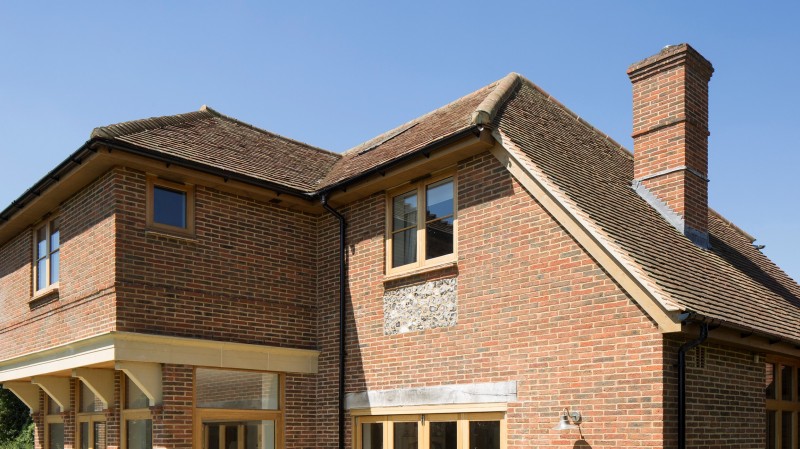You are here: Understanding your home’s roofline
The roofline is usually out of sight and out of mind – until something goes wrong and requires fixing. Whether you need to replace a roofline component due to wear and tear or are building a new extension, it helps to understand some of the key terms that may crop up when talking to building professionals. Here’s a simple guide to the jargon to get you up to speed.
When you look at most houses, you will see there is boarding directly under the roofline. The main elements - fascias, soffits and bargeboards - essentially create a box around the edge of the roof and external walls to give a neat, finished look and protect your property from wind-driven rain.

What is a fascia board?
The fascia, or fascia board, is the long horizontal board that runs along the lower edge of a roof and is fixed to the roof trusses. The fascia needs to be strong and stable as it often holds the lower row of roof tiles in place and provides a solid base on which to fix guttering. In a heavy downpour, it may have to carry the weight of several kilos of water per second running off the roof into the gutters.
One of its main purposes is to stop the exposed ends of rafters absorbing moisture which can lead to damaging damp and rot. It’s important the fascia board is well maintained to ensure it remains water resistant and can support the weight of roof components. Rotten or warped fascia boards may let water seep into your roof space for months or even years before the effects are noticed.
Soffits
Soffits are the horizontal boards underneath an overhanging roof between the fascia and external walls of your home. Depending on the design of a house, the amount the soffit extends beyond the external wall, varies from a few centimetres to more than a metre. The purpose of the overhang is to protect the brickwork from rain. Soffits also seal the roof space so birds and rodents can’t get in and build nests.
‘Soffit’ is a French word and translates to mean something fixed underneath. In roofing systems, soffit boards are usually screwed or nailed to the rafters. As fascia boards and soffits abut, they are typically made of matching materials.
Many soffits have built-in vents to allow enough air into the roof space to help prevent damaging damp and rot.
Bargeboards and boxends
Bargeboards are under the roofline at gable ends (triangular front, side or back) of a house. Like fascia boards, they help shield roof timbers and brickwork from wind and rain. But they aren’t as important structurally as they don’t support the weight of guttering or tiles. The condition of the bargeboards can make a big difference to the external appearance of a house.
Finally, there are boxends, also found on gable ends, which accommodate the fascia, soffit and bargeboard at each corner of a house in a neat, right angle shape. They have been described as the roofing equivalent to a hospital corner on a well-made bed.
Best materials
Roofline components are available in a variety of styles and materials to complement a building’s windows.
Traditionally, a property’s roofline was built from timber. If properly taken care off, timber products are long-lasting but do require regular maintenance. Peeling or cracking paint may mean soffits, fascias and bargeboards simply need repainting, but check the condition of the wood for any rot. Look for any soft spots, small holes or possible asbestos. If you spot any of these signs, seek advice from a professional as you may need to replace some components.
Over the last 25 years, many homeowners have opted to replace timber roofline products with low-maintenance, lightweight UPVC alternatives that won’t require a trip up a ladder to repaint. Updated Working at Height regulations, mean that jobs that could once be done on a ladder may now require scaffolding or a ‘cherry picker’ (mobile platform) which will significantly add to the cost. On the downside, plastic roofing components are less environmentally friendly than traditonal timber.
Look for durable products with a 10 or 20-year guarantee. They may not be the cheapest to buy but will save you the hassle and expense of repairs in the longer term.
Soffits, fascias, bargeboards and boxends all work together to give a stylish, finished look to your roofline as well as protect timbers and brickwork from the weather. These products can add valuable kerb appeal to your property.
If you are looking to make some home improvements, you may find some of these services useful
Building Regulations
Find details of local experts who can help with Building Regulations
Architectural Design Services
Find local Architectural Design experts
Builders
Find local help with a building project
Structural Inspections
Find an expert to carry out a structural inspection
Building Surveys
I want a local surveyor to do a Building Survey for me

